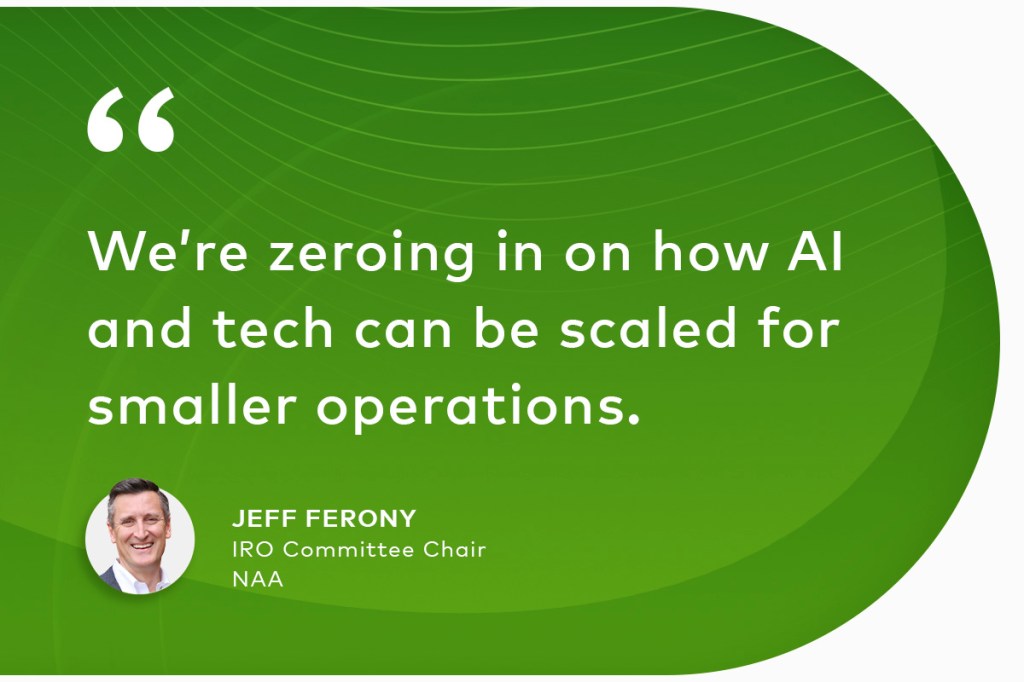
In 2024, the economic landscape is as confusing as ever. Are we entering a period of stability and prosperity, or is this a peak before a crippling recession? Or maybe something in between that’s harder to define? We asked Jeff Adler, vice president of Yardi Matrix, who has made a distinguished career for himself spanning over three decades across various sectors of the real estate industry.
Jeff’s expertise is grounded in his leadership roles — from revitalizing operations at AIMCO to pioneering strategies in multifamily, commercial real estate, student housing and more. His academic prowess, marked by degrees from Yale and the Wharton School, complements his practical experience. All of us at Yardi Breeze, not to mention the property managers who utilize Yardi Matrix for its unparalleled market intelligence, rely on him for the latest market trends affecting real estate. As we delve into the complexities of economic cycles, let his perspective help you navigate economic uncertainty.
One of the curious things about economic outlooks is that we always seem to be on the verge of a recession. What’s going on here?
Jeff Adler: I’ll start by acknowledging that there’s a cyclical nature to economic activity. This understanding comes from reading a lot of history, which reveals the cycles of economic activity and financial cycles. These cycles are driven by the creation and destruction of credit. Personally, I’ve experienced numerous cycles since 1973, spanning over 50 years. To truly grasp these economic cycles, one might need to look back 500 years, as the major cycles typically occur every 80 to 100 years. Currently, we’re still feeling the effects of the Great Financial Crisis of 2008-2009, an event the likes of which hadn’t been seen since the 1929-1933 period. It’s important to recognize that the full impact of the 1929 crisis wasn’t resolved until 1945.
Now, moving on to the post-Great Financial Crisis era, we observed a period of slow economic growth and low inflation, influenced by demographic changes, regulatory constraints and other factors. In 2017, tax cuts led to an acceleration of economic growth. However, by 2019, we began to see signs of a potential economic slowdown, indicated by a yield curve inversion. These indicators, such as yield curve inversions and changes in the money supply, typically precede recessions or expansions by 12 to 18 months, as it takes time for their effects to permeate through the economy.
For operators facing challenges, the emphasis is on finding cost-cutting measures and improving processes rather than succumbing to pessimism. Automation and operational enhancements are ways to adapt and thrive.
The COVID-19 pandemic and its subsequent handling were unprecedented. For the first time in history, the global economy was voluntarily shut down, accompanied by a massive injection of liquidity to mitigate the economic fallout. This led to a shift in demand from services to goods, creating supply chain issues and a significant rebalancing of the economy. In 2020, there was a 40% surge in the money supply, the effects of which began to materialize with a lag.
By early 2021, it was evident that measures needed to be taken to address the economic impacts, including supply shocks and changes in consumer behavior due to lockdowns and remote work. Demographic shifts and a significant migration pattern emerged, with people moving to areas with a lower cost of living, thereby increasing demand and driving up rents by 20-30%, especially for new rentals due to a fixed supply of housing. This massive movement of people and influx of money supply led to notable inflation in rent and other areas, highlighting the ongoing challenges in managing the economy through these shocks.
Did anyone predict a movement of people on such a scale?
Jeff Adler: Absolutely not. The size and manner of this movement were completely unprecedented, something we hadn’t seen before. In 2021, we saw housing costs increase. However, those relocating didn’t mind the higher costs since they were moving from more expensive areas, and there was plenty of money in circulation. It’s important to note that inflation doesn’t manifest immediately; it takes about a year to filter through the economy. By the latter half of 2021, inflation surged, prompting the Federal Reserve to start increasing interest rates in early 2022. This adjustment takes time to affect the economy, especially when rates were aggressively raised from 0% to 5.25%. The yield curve inversion in the fall of 2022 indicated a potential recession about a year and a half away.
The Federal Reserve’s actions, including raising interest rates and quantitative tightening, aimed to curb inflation and reduce excessive demand amidst a labor shortage. The labor market in 2021 was robust, marked by dislocations across industries and significant shifts as people sought better opportunities, leading to wage and rent increases. These dynamics are gradually resolving, but it’s a slow process.
As these adjustments take hold, inflation has peaked and is now decelerating, although it remains above the 2% target. Recent reports suggest it’s around 3.5%, but removing housing from this calculation, which is a lagging indicator due to the way housing costs are measured, shows a potential decrease. The surge in new supply in many markets is leading to declining rents for new leases, though renewal rates are still increasing but at a slower pace.
The labor market is adjusting, with recent job growth concentrated in low-wage sectors such as hospitality and healthcare, while high-value sectors like tech and finance remain stagnant. Despite some job cuts and layoffs, especially in tech, unemployment claims remain low, though continuing claims suggest a longer duration for finding new employment, indicating a loosening job market. Wage growth expectations are adjusting, with potential normalization to levels consistent with a 2% to 3% inflation rate, reflecting broader economic shifts including the war in Ukraine and demographic changes affecting labor force participation rates.
Yardi Matrix … exists to help businesses effectively navigate cyclical economic challenges.
The economy is experiencing a period of transition, influenced by monetary policy adjustments, labor market dynamics and changes in work flexibility. These factors contribute to a complex and evolving economic landscape, where precise predictions are challenging but the general direction of slowing economic growth and adjustments in the job market and inflation rates can be predicted.
Are we returning to a normal economic cycle?
Jeff Adler: It’s important to consider everything that’s happened since 2020. Inflation has significantly impacted the economy, leading to periods where real wages decreased as prices increased before wages could catch up. However, wages did eventually adjust. The current deceleration in wage growth is linked to the overall slowing of the economy and other prices decelerating, reducing market power and the urgency of shortages, thus diminishing the ability to enforce significant price increases.
We are indeed moving towards a period of normalcy as the economy rebalances. This doesn’t necessarily mean wages or prices will decrease unless there’s a significant reduction in the money supply and credit. The Federal Reserve’s goal, thus far achieved successfully, is to carefully deflate the economy’s inflationary pressures without causing a collapse, akin to avoiding the severe deflation experienced from 1930 to 1933 when the money supply contracted by 30%, leading to economic shrinkage and numerous problems.
The strategy aims to slow the rate of economic growth without inducing an absolute decline in price levels, which would introduce a new set of challenges. Consequently, while wage growth is slowing, wages themselves are not decreasing, indicating a cautious approach to returning to economic normalcy without triggering adverse effects.
Given our measurably strong economy, why are so many people pessimistic?
Jeff Adler: Many people feel pessimistic due to specific challenges that disproportionately affect them. For individuals trying to buy a home without previously owning one, the high price levels of real estate combined with elevated interest rates can make this goal seem unattainable. This situation contrasts sharply with those who have refinanced their mortgages at low rates around 3%, bought cars before or during the early stages of COVID-19 when interest rates were low or have not seen a significant increase in their fixed costs. These individuals may have a considerable amount of disposable income due to rising wages without corresponding increases in most of their expenses, leading to a better financial situation.
However, the reluctance to openly discuss financial well-being can contribute to a skewed perception of the economy. For those attempting to enter the housing market, the situation is particularly tough. In booming regions of the Southeast, for instance, rents have surged has high as 9% since 2022 without a matching increase in wages. Many find themselves squeezed financially. Senior living got hit. Renters have felt it. Anyone who had to buy a car knows what I’m talking about. Additionally, the cost of living has increased for many, with the price of transportation and vehicles rising due to shortages and interest rate hikes, further compounded by periods of high gas prices.
Inflation impacts people unevenly, hitting those at lower income levels hardest as a larger proportion of their income goes towards essentials like food, rent and transportation. Homeowners and those who are not faced with these rising costs may not feel the effects of inflation as acutely. Conversely, individuals in lower economic strata, especially those working in person-to-person industries, miss out on the benefits of remote work, such as reduced commuting costs and increased flexibility. They’re bearing the brunt of these economic shifts.
Here’s another thing to keep in mind. The overall statistics may not fully capture these disparities. Well-educated workers with stable costs for transportation and housing, who have benefited from the shift to remote work, represent a minority. Their increased flexibility and reduced need for travel and daily expenses have significantly improved their quality of life, unlike the majority who face heightened financial pressures. This divergence in experiences contributes to the pervasive sense of pessimism despite the strong economy, highlighting the need to consider individual circumstances and the unequal impacts of economic conditions.
Is there an opportunity cost to overpreparing for a recession, such as lost expansion or investment opportunities?
Jeff Adler: Our focus is to empower our clients by highlighting what they can do rather than what they can’t. Yardi Matrix in particular exists to help businesses effectively navigate cyclical economic challenges. I would argue that it’s crucial to provide an accurate assessment of the current situation: explain what’s happening, why it’s happening and what’s likely to happen next, along with actionable advice for our clients. For instance, in the transaction market, buying assets as before might not be feasible due to unworkable deals. However, there are alternatives like exploring growing markets, considering assumable debt or looking for distressed situations to deploy capital.
For operators facing challenges, the emphasis is on finding cost-cutting measures and improving processes rather than succumbing to pessimism. Automation and operational enhancements are ways to adapt and thrive. We consistently focus on actionable strategies in all our webinars, believing that it’s straightforward to list limitations but more valuable to identify opportunities.
Given the current economic climate, certain markets in the U.S. are experiencing a slowdown in rent increases due to an influx of supply. This situation is temporary, and over time, as these cities absorb the new supply, we anticipate a normalization of living costs and future rent growth. A potential issue arises from the current slowdown in project development due to increased costs and financing challenges, suggesting a shortage of supply in the future, say around 2025-2027, which could lead to rent increases once again.
Small businesses must continue to focus on delivering exceptional services despite these obstacles, preparing for increased costs in insurance, taxes and other operational expenses.
Real estate is inherently cyclical, involving cycles of economy, financing and development. Ignoring these cycles can lead to insufficient supply when demand spikes, often managed through regulatory means that can stifle supply or price adjustments. This has been evident in California, where housing restrictions have led to high rents and significant outmigration as people and companies seek more favorable environments.
Historically, economic growth has been concentrated in a few cities, leading to disparities. However, a shift occurred as people chose to relocate for better opportunities, demonstrating the impact of individual and collective decisions in response to economic pressures. COVID-19 accelerated this trend of outmigration from states like California, New York and Illinois. Though it has since returned to pre-pandemic levels, the movement continues but at a slower pace.
What do our clients really look to us to provide?
Jeff Adler: Our clients are exposed to so much clutter. They look to us to help them navigate through the overwhelming amount of information they encounter on a daily basis. We aim to simplify the complexity, providing clarity on where they stand in the economic cycle amidst the chaos of secular trends such as technology advancements, demographic shifts and changing government policy, as well as the implications of new developments like remote work. Our role is to sift through the noise and make sense of the world for our clients, guide them toward likely outcomes and equip them with the data they need to make informed decisions.
At Yardi Matrix, we don’t release updates just for the sake of it. Our publications, such as MHN and CPE, are deliberate, aiming to add value when we speak. Our cultural ethos is to remain silent until we have something substantive to say, emphasizing the importance of having a well-thought-out point of view. We commit ourselves to providing clear insights without giving in to hysteria. We present our conclusions upfront, followed by detailed explanations of our reasoning.
This method allows our clients to understand our perspective and engage with it critically. We value this transparent dialogue, acknowledging that while we strive for accuracy, the possibility of error remains. That’s so important for us to explain our thought process.
What sets Yardi apart from others in the industry who offer insights & analysis?
Jeff Adler:Our stance is unique because we operate alongside our clients, empathizing with the pressures and decisions they face. Unlike analysts or journalists who observe from a distance, we are actively involved in the decision-making process. We understand that inaction is also a choice. This perspective fosters a deep commitment to guiding our clients through uncertainties.
Do our clients ever get frustrated if our predictions don’t match the economic outcomes?
Jeff Adler: Clients do get frustrated when our predictions don’t align perfectly with economic outcomes. My stance is straightforward: clients pay us for our honest insights, not for unwavering accuracy or to hear what they want. Our reputation is paramount, and we strive to get it right, focusing on long-term value over momentary popularity.
For example, we’ve advised that with incoming supply, rent growth would decelerate and expenses would rise, potentially leading to a tougher economic environment. Whether this directly indicates a recession can be uncertain, but providing a general direction and understanding of the economic cycle is key. Our advice is meant to inform long-term investment strategies, acknowledging that while timings can be approximate, the overall trend and necessary actions are clear. Feedback from clients who have applied our insights confirms our value, which leads to repeated engagements and discussions.
Despite the inevitable frustrations that come with the unpredictability of economic forecasts, our client base has continued to grow, even in challenging times. This growth is a testament to our dedication to honesty, diligence and the pursuit of accuracy. We acknowledge our imperfections but always strive for excellence in our field. We’re not perfect. We make mistakes for certain. But we try really hard to get it right.
Any final words of economic wisdom for small businesses?
Jeff Adler: For small businesses, it’s crucial to recognize the importance of the local economy and how it influences your operations. With varying economic conditions across the country, areas like the Midwest are experiencing stability and growth, showcasing that challenges are not uniform nationwide. It’s a reminder that while some regions thrive, others face difficulties, underscoring the need to adapt based on local market conditions.
Operating in the current environment presents its set of challenges, from rising expenses to the need for labor-saving technologies. The cost of funds is higher, and while some costs may not decrease significantly, finding ways to optimize operations remains essential. This includes embracing technology to reduce labor dependence, as the labor market remains tight.
Small businesses must continue to focus on delivering exceptional services despite these obstacles, preparing for increased costs in insurance, taxes and other operational expenses. The real estate sector, often seen as a path to wealth accumulation, requires patience and adherence to fundamental practices of offering quality housing at reasonable prices. While quick riches are occasionally possible, the norm is gradual wealth-building through diligent management and long-term strategies.
We’re navigating a period marked by significant shifts. These factors will continue to shape the economic landscape, requiring businesses to adjust and plan with these long-term trends in mind. Adaptation, resilience and a focus on core business principles are key to navigating the complexities of today’s economic environment.



